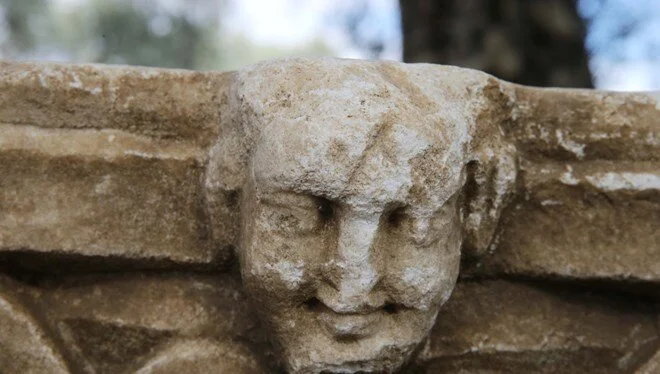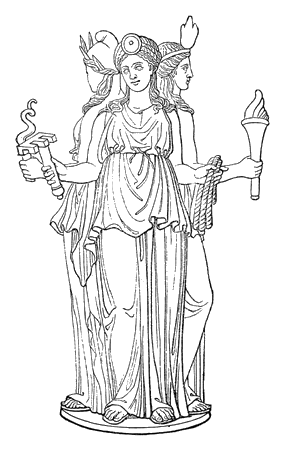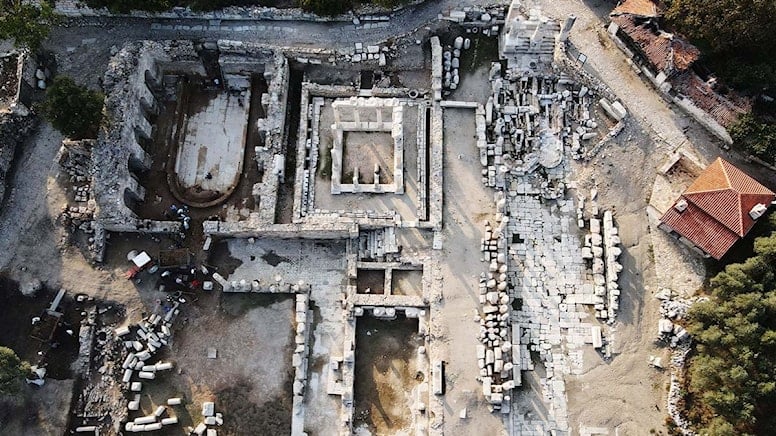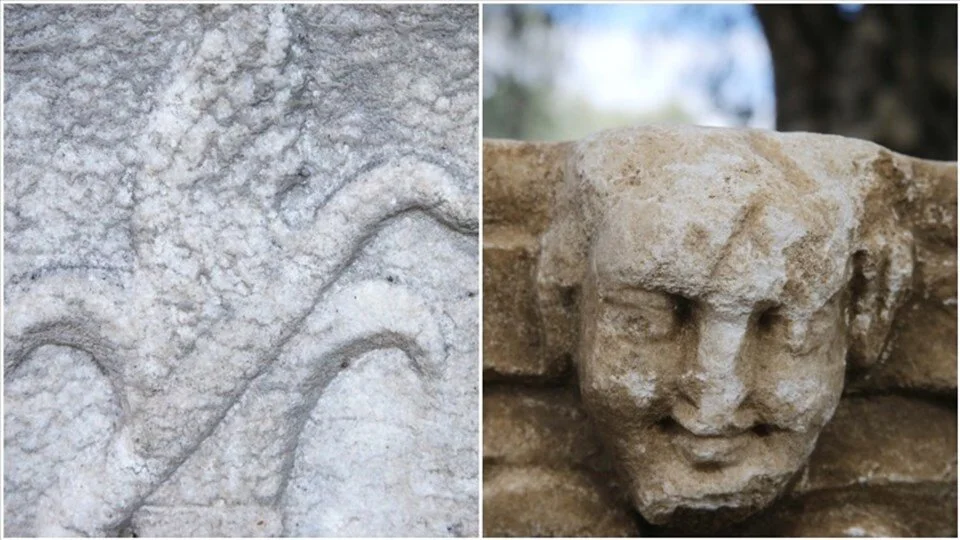
A torch and a figurative head of Hecate were found in the 3,000-year-old Lagina Hecate Sanctuary
In the archaeological excavations conducted at the 3,000-year-old Lagina Hecate Sanctuary, located in the Yatağan district of Muğla in southwestern Türkiye and considered a center of pagan belief, a torch of Hecate and a figurative Corinthian column capital dating back to the 2nd century AD were found.
Hecate is an important figure in Greek mythology. She is associated with darkness, witchcraft, the moon, sorcery, ghosts, necromancy, poisonous plants, and dogs.
Hecate is often depicted as having three heads or three bodies. Each head represents a different aspect: the sky, the earth, and the underworld.

The head of the Stratonikeia and Lagina excavation team, Prof. Dr. Bilal Söğüt, stated, “The sanctuary is the religious center of the ancient city of Stratonikeia, located approximately 8.5 kilometers away. The largest temple dedicated to the goddess Hecate in ancient times is in Lagina.”
📣 Our WhatsApp channel is now LIVE! Stay up-to-date with the latest news and updates, just click here to follow us on WhatsApp and never miss a thing!!
Söğüt stated, “In our work at the site, we first found Hecate’s torch, which is carved on a column. In addition, we discovered various Corinthian column capitals from the Hellenistic and Roman periods, and for the first time, a figurative Corinthian capital dating back to the 2nd century AD was also found, and we believe there will be more to come. These findings indicate that we will achieve good results in the excavations. Here, we will extract and evaluate data related to the Hecate cult, findings related to ancient architecture, and artifacts concerning social life.”

The excavation team will attempt to uncover the entrance of the Sacred Way leading to the Lagina Hecate Temple. When visitors arrive, they will first be able to access the entrance gate from a specific area and then proceed from the sacred area to the location of the temple.
Söğüt emphasized that they have obtained findings from a 3,000-year historical period at the excavation site, noting that especially in the recent excavations, artifacts from the Hellenistic and Roman periods have been discovered.

He pointed out that there were also Byzantine uses in the region for a time, but they observed that there was no usage after the early Byzantine period. “This means that we will find these Hellenistic and Roman artifacts in their original context. Unfortunately, due to the lack of construction here for many years, erosion is quite high. There is about 4 meters of soil fill, and we are carefully excavating it by hand. We will remove a lot of soil, but we will find beautiful things here,” he stated.
You may also like
- A 1700-year-old statue of Pan unearthed during the excavations at Polyeuktos in İstanbul
- The granary was found in the ancient city of Sebaste, founded by the first Roman emperor Augustus
- Donalar Kale Kapı Rock Tomb or Donalar Rock Tomb
- Theater emerges as works continue in ancient city of Perinthos
- Urartian King Argishti’s bronze shield revealed the name of an unknown country
- The religious center of Lycia, the ancient city of Letoon
- Who were the Luwians?
- A new study brings a fresh perspective on the Anatolian origin of the Indo-European languages
- Perhaps the oldest thermal treatment center in the world, which has been in continuous use for 2000 years -Basilica Therma Roman Bath or King’s Daughter-
- The largest synagogue of the ancient world, located in the ancient city of Sardis, is being restored











Leave a Reply